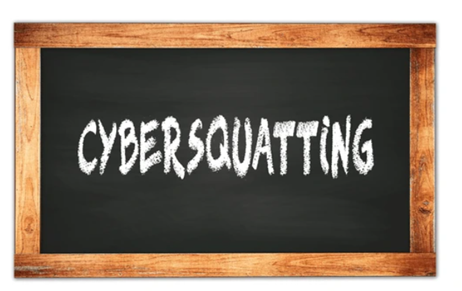Artificial intelligence has a wide range of effects, including on intellectual property law. At best…
Tests For Comparison Of Two Similar Marks Comparing Similar Trademarks
Introduction
A mark is similar to another trademark when it resembles it visually or phonetically or structurally etc. When comparing two similar trademarks, it is important to compare them in their entirety. One must assess the similarity between two marks from a visual as well as a phonetic point of view.
Historical Background
The test for comparison of two similar marks was formulated by Lord Parker. In the words of Lord parker, when two trademarks are compared one must:
- Judge them by their look as well as their sound,
- Consider the nature and kind of customer who would be likely to buy those goods,
- Consider all the surrounding circumstances,
- Consider what is likely to happen if each of those trademarks is used in a normal way as a trademark for the goods of the respective owners of the marks.
Only after considering all these circumstances, must one come to the conclusion that there will be confusion in the minds of the public at large.
[Image Sources : Shutterstock]

In Corn Products Refining Co. v. Shangrila Food Products Ltd. (1960) it was held that it is well known that the question whether the two marks are likely to cause any confusion or not is a question of:
- First impression which shall be decided by the courts,
- Similarity between two marks for which the marks have to be considered as a whole and
- Trade connection between different goods.
Further, in Amritdhara Pharmacy v. Satya Deo Gupta, (1963) it was held that in order to ascertain deceptive resemblance between two similar marks, two important questions must be answered:
- Who are the persons likely to be deceived or confused due to the resemblance between the two marks? and
- What rules of comparison are to be adopted in judging whether such resemblance exists?
Subsequently, in the landmark case of S.M. Dyechem Ltd. v. Cadbury (India) Ltd. (2000) three tests were applied for comparing the similar trademarks:
- The first being whether there is there any peculiar aspect of common feature which has been copied?
- The second being whether the dissimilarity in the part or parts is enough to make the whole thing dissimilar?
- The third test being whether when there are any common elements and what is the first impression?
Is Intent To Cause Confusion Essential?
In Parker-Knoll v. Knoll International (1962) Lord Denning made the observations that the offending mark must “so nearly resemble” the registered mark as to be “likely” to deceive or cause confusion. It is not necessary that there ought to be any mala fide intention of causing confusion. Instead, one must consider the probable effect on the public at large.
Analysis And Conclusion
All in all, it is safe to say that the essential parameters for comparing two similar trademarks are:
- Comparison of the two marks as a whole; visual and phonetic resemblance,
- First Impression and
- Trade Connection
Comparison As A Whole
In F. Hoffmann-La Roche & Co. Ltd. v. Geoffrey Manner & Co. (P) Ltd., (1969) it was decided that both the visual and phonetic tests must be applied. It is also critical to compare the marks as a whole. It is not correct to pick one part of a word and claim that there is no sufficient similarity to cause confusion because that portion of the word differs from the equivalent portion of the other word. The true test is whether the proposed trade mark as a whole is likely to induce deceit, confusion, or error in the minds of people who are familiar with the registered trade mark.
In Cadila Laboratories Ltd. And Anr. Vs. Dabur India Limited (1997), the Hon’ble Delhi High Court observed that while comparing two rival marks, it is not permissible to dissect the words letter by letter and syllable by syllable and the phonetic or visual similarity of the marks must be considered as a whole.
First Impression
In Aristoc Ltd. v. Rysta Ltd. the House of Lords while considering the resemblance between the two words “Aristoc” and “Rysta” relied upon the dictum of Lord Justice Lukmoore and asserted that in order to determine whether the sound of one word resembles too nearly the sound of another word, the first impression of a person who is not familiar with the two words must be determined.
TRADE CONNECTION
In Advance Magazine Publishers v. Just Lifestyle Pvt. Ltd. (2016), the Bombay High Court considered the aspect of similarity from the standpoint of the nature of goods/services, trade connection, customer base, source of revenue generation, etc.
The Hon’ble Supreme Court in Nandhini Deluxe v. Karnataka Coop. Milk Producers Federation Ltd., (2018) observed that not only the visual appearance of the two marks was different but also they related to different products. Thus, the Apex Court was of a view that it was highly unlikely that the two marks would cause any confusion to an average man of ordinary intelligence.
Author : Sonakshi Pandey, in case of any queries please contact/write back to us via email to chhavi@khuranaandkhurana.com or at IIPRD.
REFERENCES
- Corn Products Refining Co. v. Shangrila Food Products Ltd., (1960) 1 SCR 968 : AIR 1960 SC 142
- Amritdhara Pharmacy v. Satya Deo Gupta, (1963) 2 SCR 484
- Hoffmann-La Roche & Co. Ltd. v. Geoffrey Manner & Co. (P) Ltd., (1969) 2 SCC 716
- Cadila Laboratories Ltd. And Anr. Vs. Dabur India Limited (1997) DLT 741
- Colgate Palmolive (India) Ltd. v. Hindustan Lever Ltd., (1999) 7 SCC 1
- M. Dyechem Ltd. v. Cadbury (India) Ltd., (2000) 5 SCC 573
- Cadila Health Care Ltd. v. Cadila Pharmaceuticals Ltd., (2001) 5 SCC 73
- Advance Magazine Publishers v. Just Lifestyle Pvt. Ltd., 2016 SCC OnLine Bom 8417
- Nandhini Deluxe v. Karnataka Coop. Milk Producers Federation Ltd., (2018) 9 SCC 183



